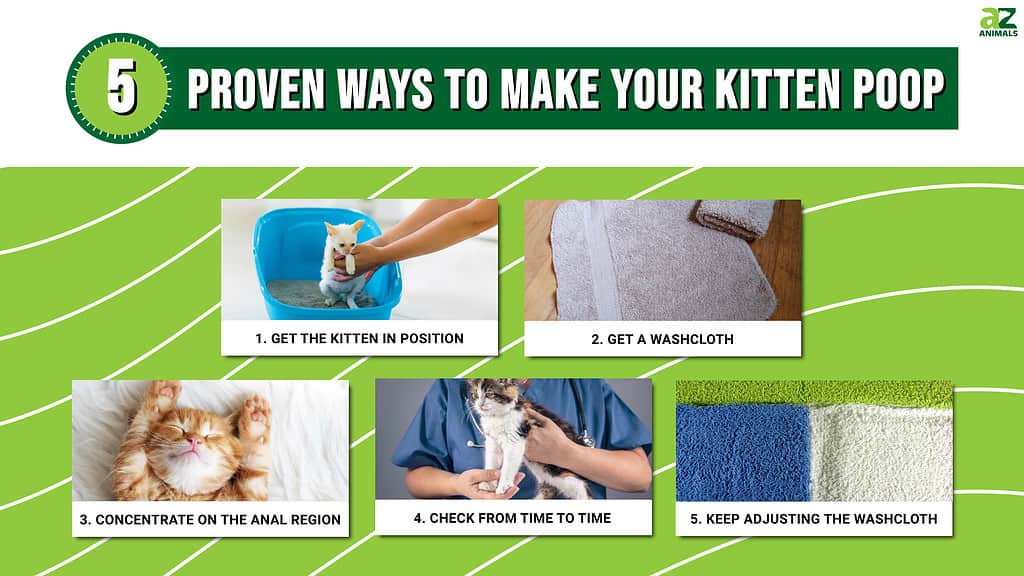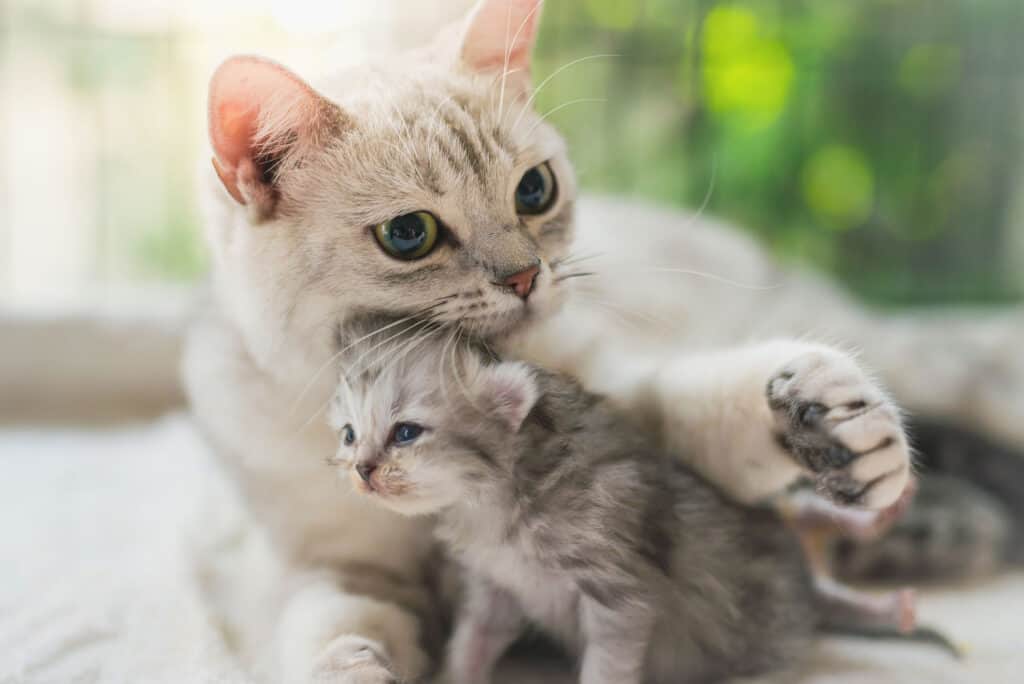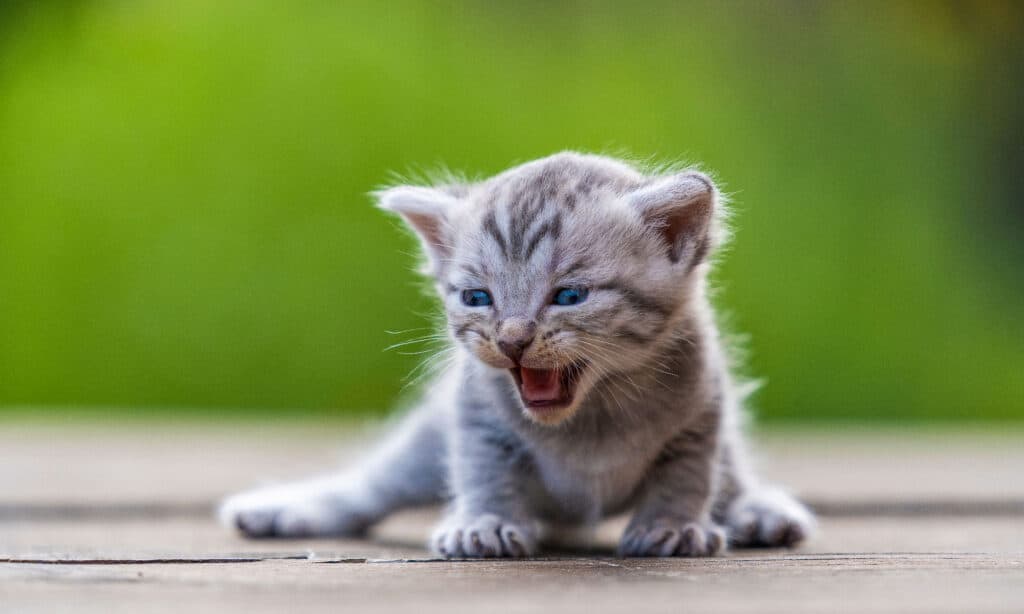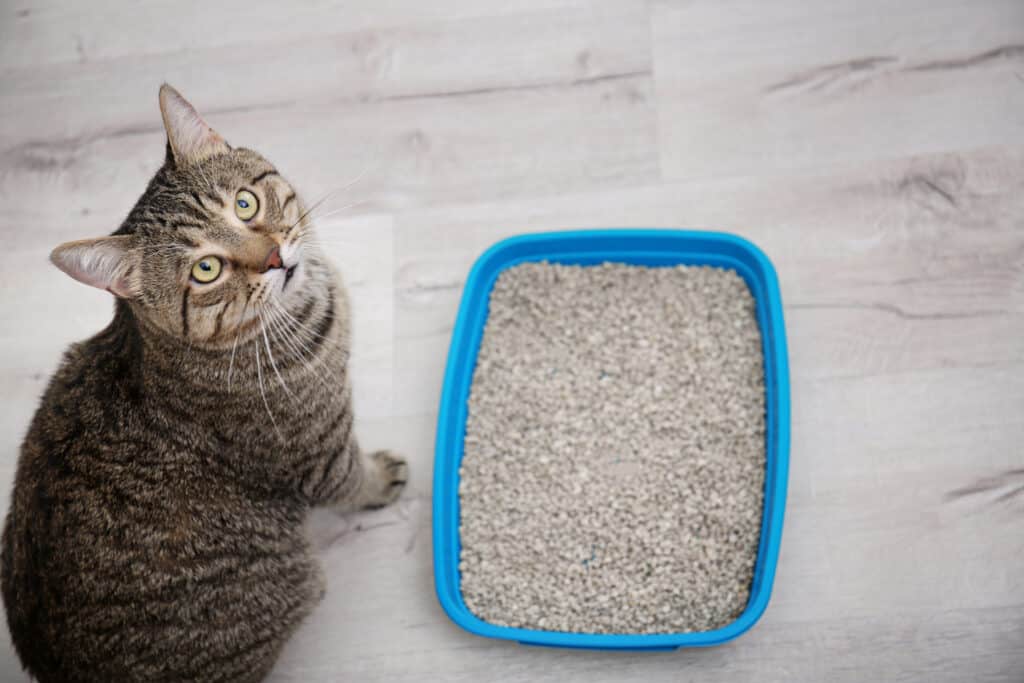Kittens are baby cats, and they are a part of the Felidae family. Cats are believed to have evolved from a long line of wild big cats but given their calmness, cuteness, and low propensity to violence, they are among the first animals to be domesticated.

Taking care of cats is a sweet yet delicate job and caring for kittens is even more delicate. This is because, among other things, kittens require special stimulation from their caregivers before they can go on to do their business. In this article, we will be exploring all the different ways to get a kitten to poop especially if their mother cats are somehow absent. Let’s get into it.
Why Do Kittens Need Help Pooping?

Kittens need help pooping because they can not excrete waste on their own.
©ANURAK PONGPATIMET/Shutterstock.com
Kittens can’t excrete fecal waste on their own, especially the ones under three weeks old. They require the help of their mother cats who typically groom and lick their babies to stimulate the ejection of fecal matter. This process is known as anogenital grooming, and once the mother succeeds in getting the baby to poop, they would often consume the poop (and pee) in an effort to keep the environment around their kittens clean. Pretty sweet, huh?
How To Make Kittens Poop
It goes without saying that if the mama cat is not around, the pet owner(s) would have to step up and take its place. And no, it doesn’t have to get as gross as licking the kitten and eating their feces. Below are some tips on how to make your kitten poop:
- Get the Kitten in Position
The first thing you need to get right in stimulating your kitten to poop is getting them in the right position for effectiveness. Once your kitten has been properly fed, hold it in a way that keeps your non-dominant hand under its belly and its hindquarters facing you. Your grasp has to be gentle so that the kitten feels comfortable and won’t escape your hand at that particular point in time. Also, experts advise doing this in a warm room as kittens are very averse to excess cold and they may fall sick or even die, in some cases.
- Get a Washcloth
If you are going to stimulate the kitten to poop, you should get a warm washcloth for your other (dominant) hand. Use this washcloth to rub the kitten’s abdomen as well as its anal quarters. This will stand in place of the usual tongue bath and grooming from the mother cat. We advise getting a light-colored washcloth that will make the color of the poop obvious and also let you know when it pees. It goes without saying that the washcloth shouldn’t be the one you use in the kitchen or bathroom.
- Concentrate on the Anal Region
After rubbing the kitten’s belly for a while, shift your washcloth-covered hand back to the anal region and massage it tenderly. This serves as an effective replacement for the mother cat’s tongue when it licks the kitten’s butt as a way of stimulating poop.
- Check From Time to Time
Remember, the goal is to get your kitten to poop so you are not just massaging them for fun. As you rub and stimulate, make sure to check periodically to see if the kitten has pooped or peed. Once the kitten starts peeing, you’ll feel some extra warmth in your dominant hand. Just keep it right there until the flow stops then wait a bit more for poop. If the poop somehow refuses to show, it could be a symptom of an illness and you might want to see a vet as soon as you can.
- Keep Adjusting the Washcloth
If the kitten does poop, you’ll have to keep massaging while also readjusting the washcloth in a way that keeps your thumb under a clean spot. Keep doing this until the kitten finishes its business. And there you have it!
After getting a kitten to pee, it is very important to clean and wipe the kitten’s butt so as to keep it clean and warn. This will help forestall a possible onslaught of rashes. You may then clean up the materials you used including washcloths, cotton boards, and of course, your hands.
What Should Kitten Poop Look Like?

Kitten poop should have a malleable texture and an oblong shape.
©iStock.com/FamVeld
Poop from baby cats should be anywhere from light brown to dark brown, depending on their age and diet. Newly born kittens have brown-colored poop with some sort of yellow cast mostly because of their milk diet, while older kittens are more likely to have dark brown poop.
Kitten scat should have a malleable texture and an oblong shape. It also should not have a pungent smell, although a light odor is normal and to be expected.
Red scat may indicate bleeding in the anus while orange/yellow scat signifies gallbladder or liver issues. In the same vein, black kitten poop may be the result of bleeding in the gastrointestinal tract and green poop may be a sign of bacterial infection or abnormal grass intake.
If your kitten’s stool is watery, it is more than likely a sign of diarrhea, and if it comes out like rock-hard pebbles, it’s almost certainly a constipation issue.
How Often Should Kittens Poop?

Although it may go up to six times daily, kittens are expected to poop at least once in a day.
©OlegD/Shutterstock.com
Kittens should poop at least once a day and in some cases, may go up to six times a day. Usually, a bowel movement occurs in kittens as often as you feed them. Kittens are also expected to urinate every few hours.
A properly fed kitten who strains hard to defecate or goes for more than 36 hours without pooping may be suffering from constipation. In such cases, we advise seeing a vet as soon as possible.
Bonus: How Do You Litter Train a Kitten?

A smaller litter pan, no higher than 2 or 3 inches, is appropriate for a kitten to use when litter training.
©New Africa/Shutterstock.com
While many folks assume that if you present a kitten with a litter box with some litter, it will instinctively know what to do, that isn’t necessarily the case. While this article has covered aiding young kittens in pooping, litter training is a bit of a different subject. However, it’s not that difficult if you start out right.
Firstly, make sure you purchase a modestly-sized litter pan suitable for a kitten–not higher than 2-3 inches tall–so your kitten can enter and exit it easily. You’ll want to make sure you purchase kitten-safe litter–a high-quality, unscented variety that’s dust-free would be the best choice. The depth of the litter in the pan should be 1-3 inches.
Place the litter box in a clutter-free corner with easy access that doesn’t require your kitten to make a long trip. You can have more than one box placed in multiple rooms if you live in a large home with multiple floors.
When actually training them, you want to first introduce them to the box by placing them in it and gently moving their paws to help them feel the litter, allowing them to hop in and out and explore it. Daily, place them in the box in the morning, after a meal, or after a nap. When you put the kitten there, step away to allow privacy. If it immediately leaves, you can place it back. You can also put your kitten in the box if you see it squatting somewhere as it it needs to go potty. With gentle repetition and positive reinforcement, your kitten should learn this skill successfully.
Summary of How to Make Your Kitten Poop
| 1. | Get the Kitten in Position |
| 2. | Get a Washcloth |
| 3. | Concentrate on the Anal Region |
| 4. | Check From Time to Time |
| 5. | Keep Adjusting the Washcloth |
The photo featured at the top of this post is © Anna Hoychuk/Shutterstock.com
Sources
- catster, Available here: https://www.catster.com/kittens/how-to-make-a-kitten-poop
- wikihow, Available here: https://www.wikihow.com/skins/WikiHow/wH-initials_152x152.png
Thank you for reading! Have some feedback for us? Contact the AZ Animals editorial team.






